Brita Metro Pitcher (6 Cup) In-depth Review

Overall Verdict
The Brita Metro is effective against chlorine and is quick to deliver crisp, good-tasting water. On one hand, the pitcher can be a little challenging to disassemble for filter replacement and cleaning. However, its simple design and other convenient features make everyday use a breeze. Thanks to its compact size, the 6-cup Metro is a good choice for a personal filter pitcher. The compromise seems to be the black particles in the filtered water that you will, unfortunately, have to ignore.
Things We Like
- NSF-certified filter
- Compatible with Standard and Elite filters
- Lightweight, compact design, fits a refrigerator door bin
- Excellent flow rate
- Easy cleanup (new model)
Things We Don’t Like
- Filter needs multiple pre-soaking
- Small flap door handle
Priced slightly above $20, the little Brita Metro looks almost plain, even for a plastic pitcher. However, its slim body makes it a promising choice for a water filter pitcher that fits in a refrigerator door bin.
But does the size mean a compromise on water quality and user-friendly features? To address this concern, we tested the Metro evaluating its performance in terms of chlorine removal, flow rate, and other key features—tests we’ve been doing to find out the best water filter pitchers. Let's discover if this petite pitcher delivers on both filtration effectiveness and user-friendly attributes.
8.9 Performance
Featuring Brita’s Standard filter, the Metro had no difficulty filtering out the chlorine in our heavily contaminated test water. It did so at an excellent speed, taking just a little more than 20 seconds to fill up a full glass. The filter produced fresh tasting water with no detectable smell of chlorine.
8.0 Chlorine
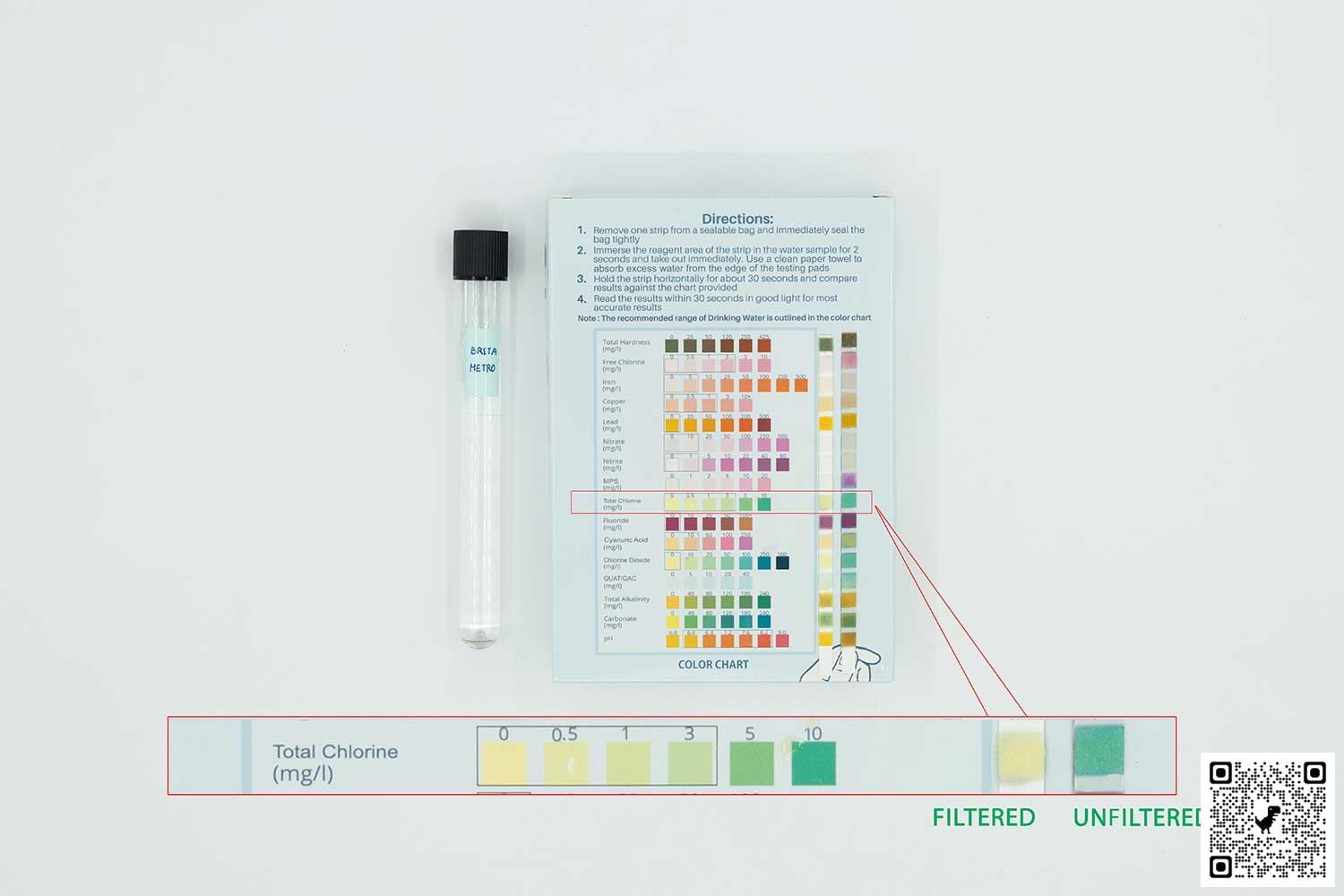
The Metro features the Brita Standard, an old generation filter, but that didn’t detract from its effectiveness. The filter easily dealt with the high concentration of chlorine, reducing it from 10+ mg to 1 mg/l. This came as a surprise as we tested the same filter model on the Brita Everyday and it left double the chlorine, which is nonetheless still well within safe levels. We couldn’t pinpoint the cause of the discrepancy, but the standard filter will work like a charm with typically lower chlorine levels in tap water.
10 Flow Rate

The Brita Standard again demonstrated its superior speed in this test, taking only one and a half minutes to work the Metro’s full reservoir. This translates to 22 seconds to fill a standard 8-ounce cup. This means it can provide drinking and cooking water to a two-person home, despite its small size.
9.3 Taste & Smell
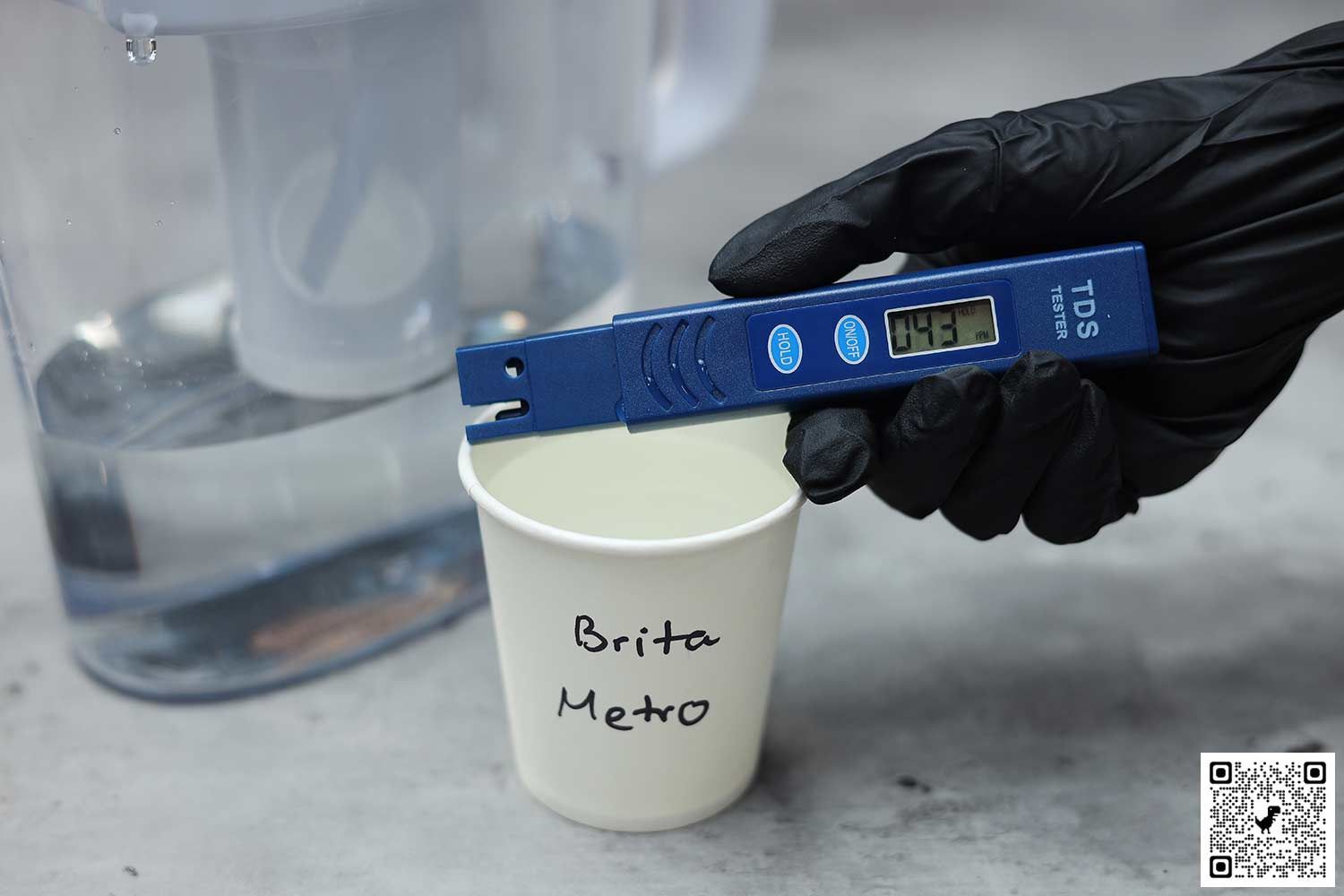
The Brita Standard filter on this Metro reduced more total dissolved solids than other Brita pitchers, leaving the TDS level at 43 ppm. The filtered water tasted bland, as clean water should, and our three testers couldn’t detect any hint of chlorine.
7.3 Design
Small enough to fit comfortably in a refrigerator door bin, the Metro has a strong build and a finish that lives up to the brand moniker. It comes with convenience features such as a pour-through door and filter replacement display. The filter piece works decently but is comparatively tricky to install and is prone to material leakage.
In the Box

- Brita Metro 5-cup water filter pitcher
- Package box
- Brita standard filter core
- User guide
The Brita Metro came in a small cardboard box with a standard filter core and a user manual.
Dimensions
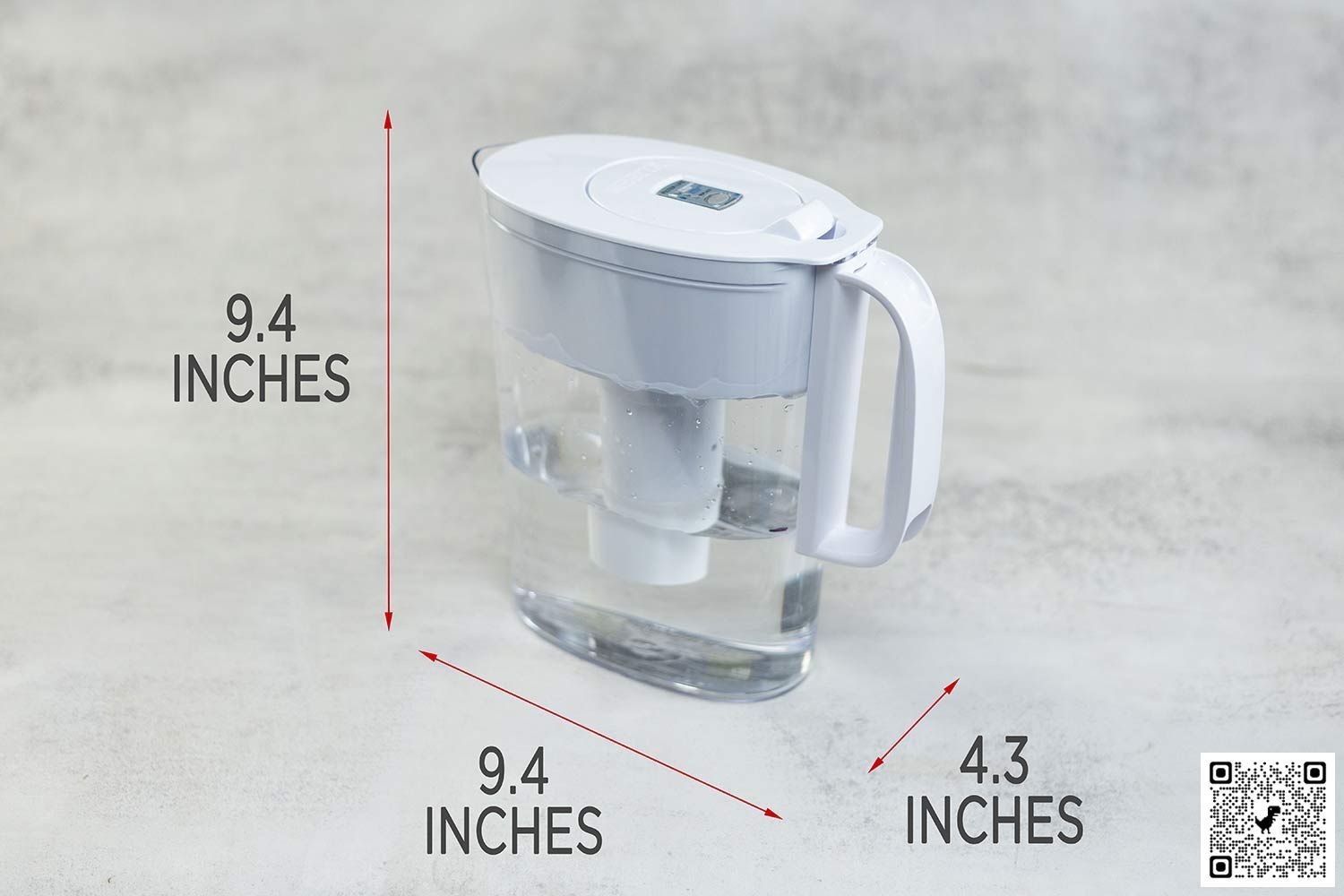
8.0 Build Quality
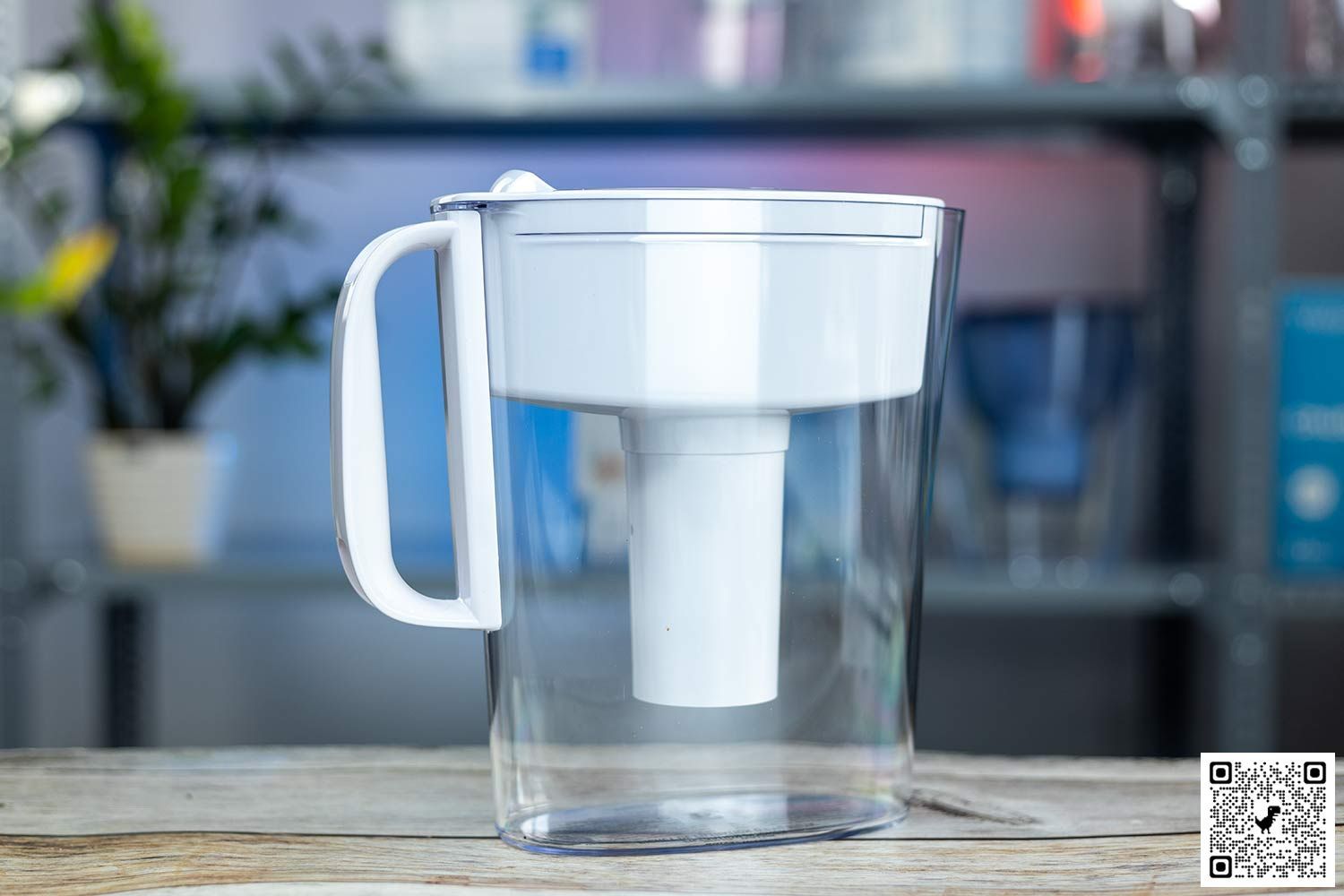
Though small, the Metro feels durable, as it’s made of quality BPA-free plastics with decent fit and finish. The removable parts all fit securely but are not a challenge to disassemble. While the design is not particularly catchy, it’s neat, slim, and inoffensive.
Unlike most other Britas, the Metro’s handle is not an extension of the pitcher, but a separate part. However, it’s a closed loop and is attached to the pitcher along its whole length. This makes it feel very stable and it has no problem supporting the pitcher’s light weight.
8.0 Conveniences
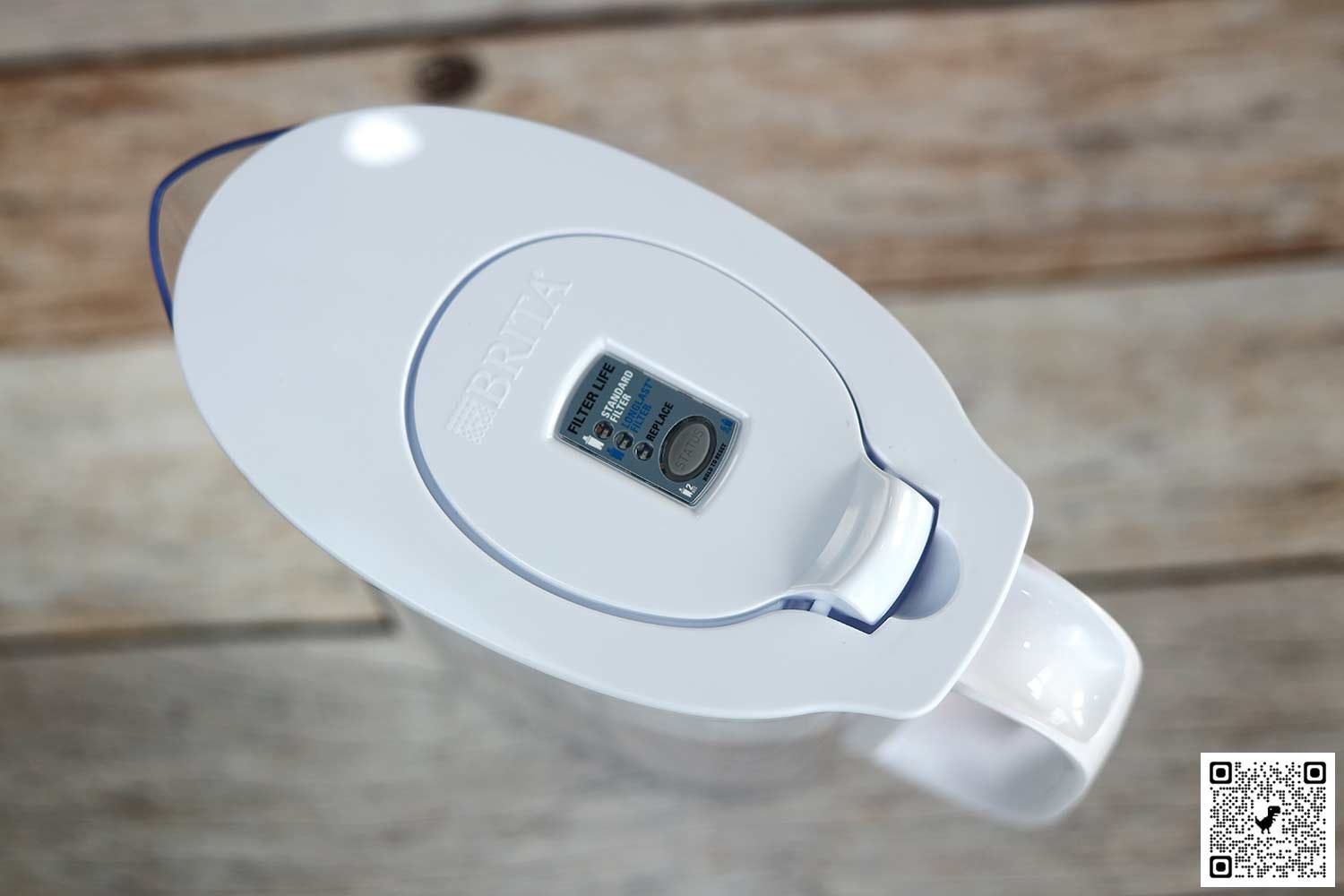
At only 4.3 inches across, the Metro can fit in even smaller fridge door bins. There’s no spigot, nor does it need one. The pitcher has a pour-through lid for convenient refilling, and thanks to its modest size and weight, you will have no issue refilling or pouring with one hand.
The Brita Metro features a built-in filter life indicator, allowing you to check the filter status by pressing on a button. Unlike the old Memo, you can set it up to display the status of the Standard or Longlast filter—the two types of filters that the Metro supports.
6.5 Filter
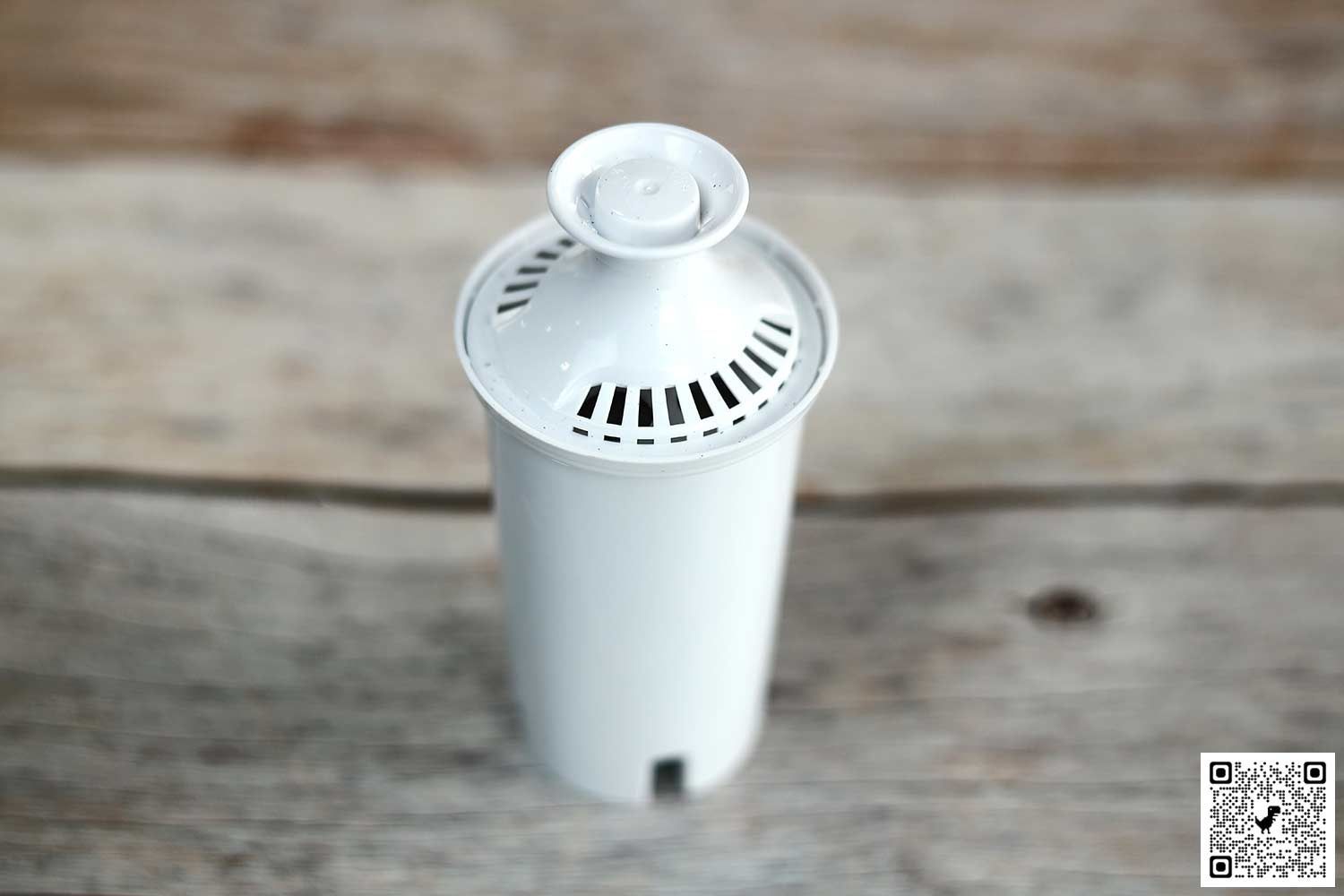

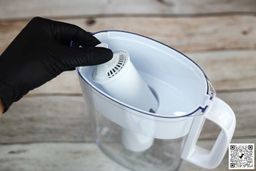
The Metro comes with a Brita Standard filter but is also compatible with the Longlast filter, which can handle three times the amount of water (120 gallons). Its filter life display can support both filter types.
To install the filter on the Metro, you need to align the small trench on the filter with the ridge in the funnel, which proved to be a little tricky. The filter piece appeared well-made and no clogging has happened since we brought it to our lab. However, we did notice filter-like materials in the filtered water after letting it sit for a couple of days. This seems to be a fairly consistent issue with Brita filters.
8.3 Usability
The Brita Metro is more user-friendly than most other pitcher filters. Removing the reservoir can be tricky, but other than that, the simple design, secure fit, and modest size and weight support effortless refilling, dispensing, and cleaning. The refill flap may work better when handled by a stable hand, but no force or skill is required to open or close it.
6.8 Assembling
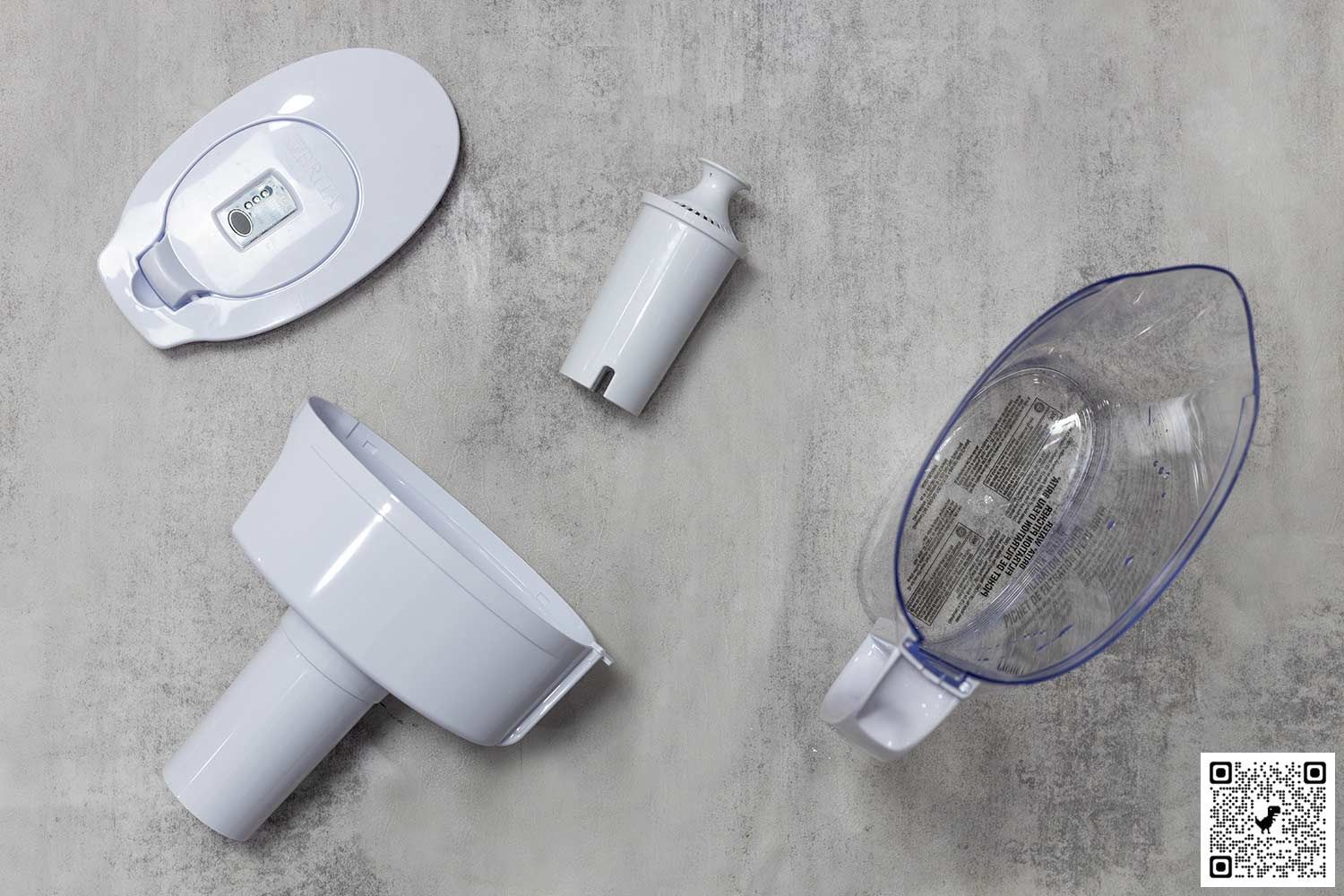
The Brita Metro has a simple design with smooth surfaces; unfortunately, it lacks grippy parts that help with disassembly. The trick is to lift up the lid at the part over the handle, then apply some force pressing the reservoir against the pitcher to remove it. Taking it apart for cleaning and replacement is awkward to say the least, and definitely not for those with sweaty hands.
8.3 Refilling
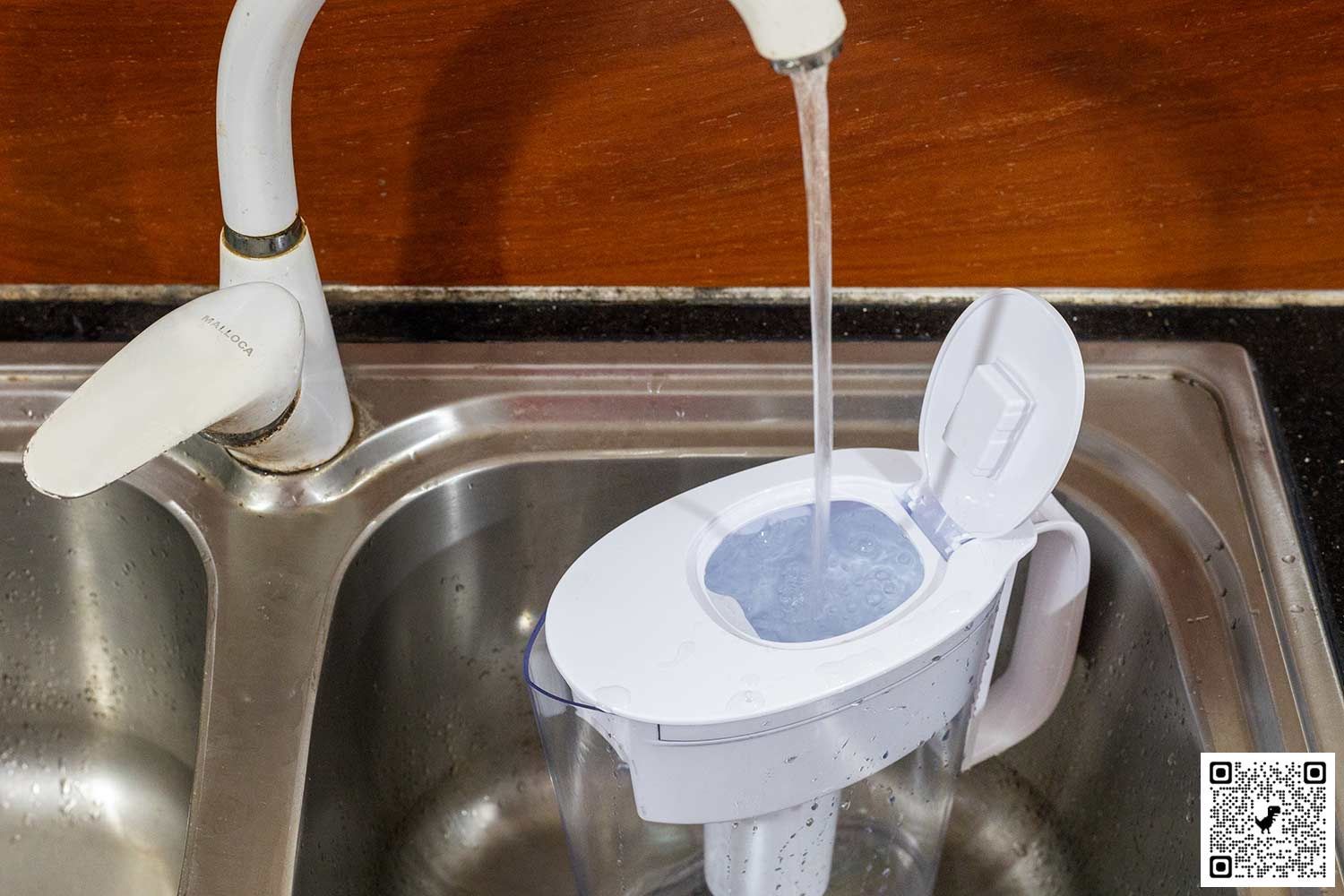
Refilling is simple with the Brita Metro, thanks to its pour-through lid. The trap flap, similar to that on the Brita Marella, proved to be more hygienic than the trap door found on other non-Brita pitchers such as the Aquagear or even our best-buy Waterdrop Chubby. The flap is not terribly secure, so those with shaky fingers may have issues stabilizing it. For most though, it won’t be a problem.
Thanks to its compact size and weight, it’s easy to hold with one hand. However, because the reservoir is small in proportion with the pitcher, it takes a few trips to fill it up.
9.0 Dispensing
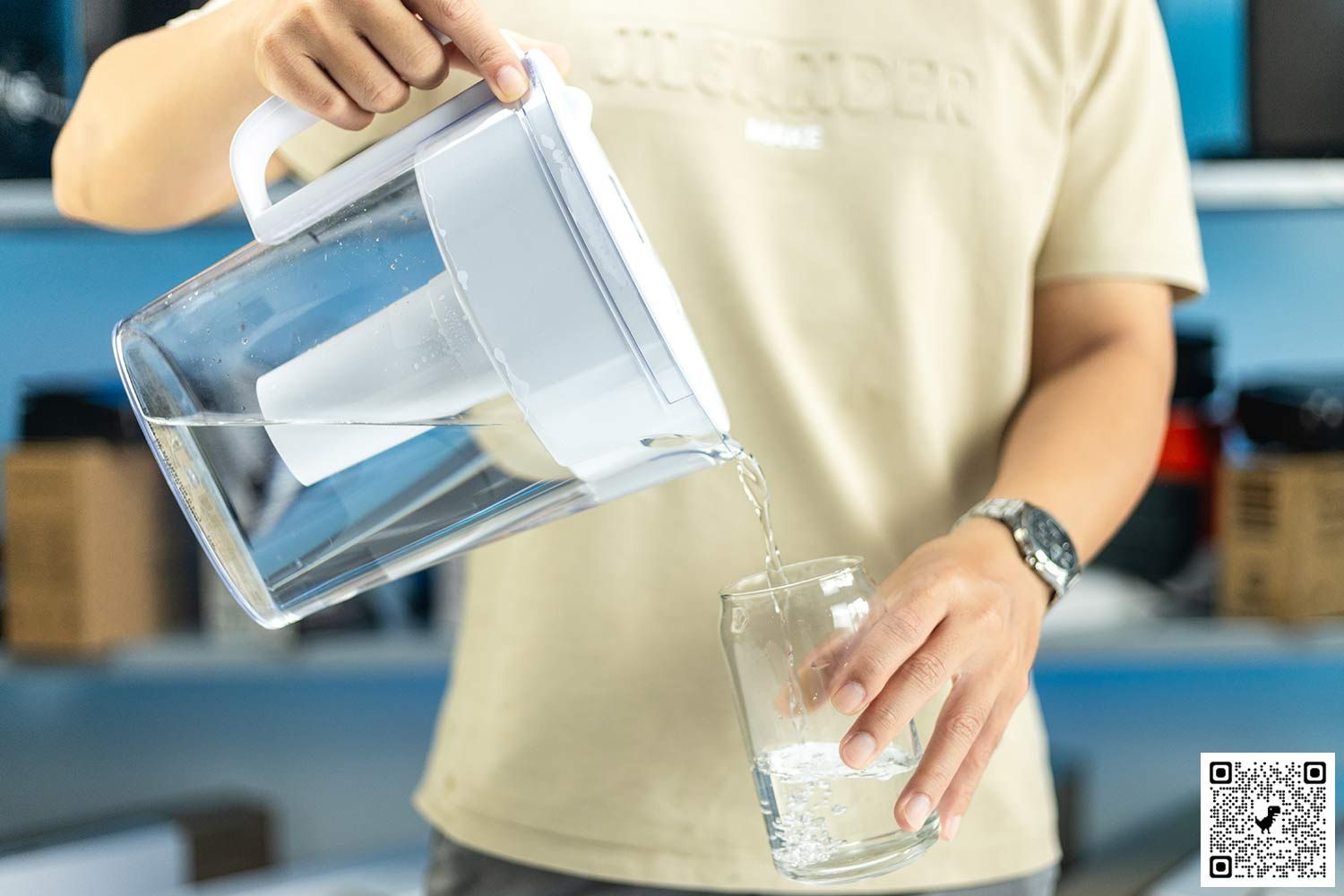
With a secure lid, you can pour water even when the filter is still working. However, you probably won’t have to resort to that given the fast flow rate. There’s no spout cover, so the flow is easy to control; on the other hand, the pitcher is therefore more prone to getting dirt inside.
The Metro does not have a spigot, which, given its tiny size and weight, makes perfect sense.
8.0 Cleaning
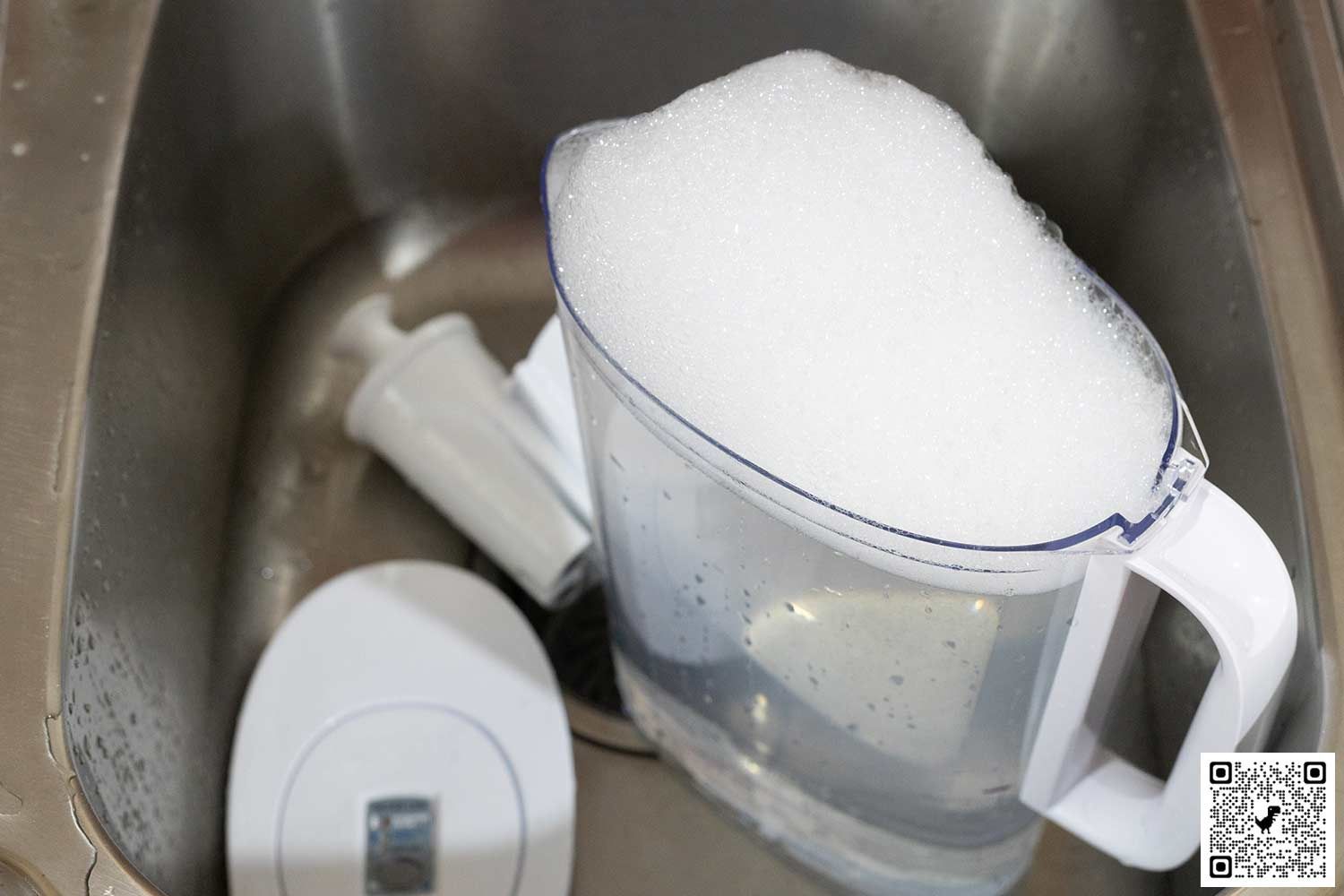
The Brita Metro loses some of its points due to it not being safe to clean in a dishwasher. Given its long, narrow filter funnel, we would recommend hand washing anyway. You may need a stick sponge for the funnel, but other than that, cleaning the pitcher is as simple as it looks.